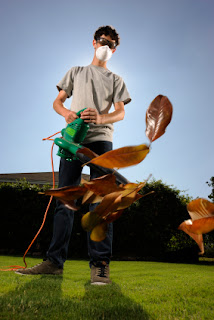Sometimes a grant writer is faced with an agency which has a Threshold Guardian beyond whom no man, woman, nor beast with an RFP shall pass. This can be explained by brain research about the left and right side of the brain.
The Threshold Guardians are usually Left Brainers. Left Brainers are hostile toward grants because they detest them more than an unbalanced checkbook. They may even experience a phobia about grant writers, because of their association with grants, causing them to dart furtively into maintenance closets.
I think of these grant-phobic-types as Left Brainers because the real reason they’re rankled by grants has nothing to do with the potential good a grant may do; they abhor grants because grants add uncertainty and complexity to their work lives in areas they need to control; that is, keeping the x’s and o’s in the right columns; and dotting all the I’s; crossing all of the T’s; and getting out the door promptly at quitting time. These functions give a Left Brainer pleasure and a reason to get out of bed; a way to maintain control; and the means to draw small boxes around their jobs or the missions of their organizations.
On the other side of the client brain types are grant champions, those charming and beautiful, grant loving people whom I lovingly refer to as Right Brainers. These are the big picture dreamer types who can accommodate the new ideas, change, and creativity that grants produce. Right Brainers express earnest intentions to willingly accept the extra drudge work that a grant entails; the accounting, the personnel functions, the labeling of equipment; and the cooperative planning. Right Brainers understand that extra work goes hand-in-hand with making things happen (as opposed to maintaining the status quo), which is what grant lovers are all about. The Right Brainers are entrepreneurial grant people.
To be fair, not
all Left Brainers are entirely grant-phobic; but I believe a scientific study would reveal that grant phobia is in direct proportion to a person’s level of activity on the right side of their brain. I’ve never met a Right Brainer that didn’t love a good grant (although a few shouldn’t be running a carnival booth much less a grant program, but that’s another post entirely).
Left Brain grant misanthropes wear striped pajamas and block your path with crossed swords while Right Brainers welcome you in and offer you tea and shortbread (and contracts); so preferring Right Brainers is a No-Brainer for a working grant writer.
For further reference on the difference between Left and Right Brain functions, see below:
Description of the Left-Hemisphere Functions
• Constantly monitors our sequential, ongoing behavior
• Responsible for awareness of time, sequence, details, and order
• Responsible for auditory receptive and verbal expressive strengths
• Specializes in words, logic, analytical thinking, reading, and writing
• Responsible for boundaries and knowing right from wrong
• Knows and respects rules and deadlines
Description of the Right-Hemisphere Functions
• Alerts us to novelty; tells us when someone is lying or making a joke
• Specializes in understanding the whole picture
• Specializes in music, art, visual-spatial and/or visual-motor activities
• Helps us form mental images when we read and/or converse
• Responsible for intuitive and emotional responses.
• Helps us to form and maintain relationships
Other Posts You May Enjoy:
Visit
Grant Samples if you need a Sample Grant, Sample Budget, Sample Abstract, or Free eBooks about grant writing.
Photo Credit: Attilio Lombardo
Published by Creative Resources & Research http://grantgoddess.com








